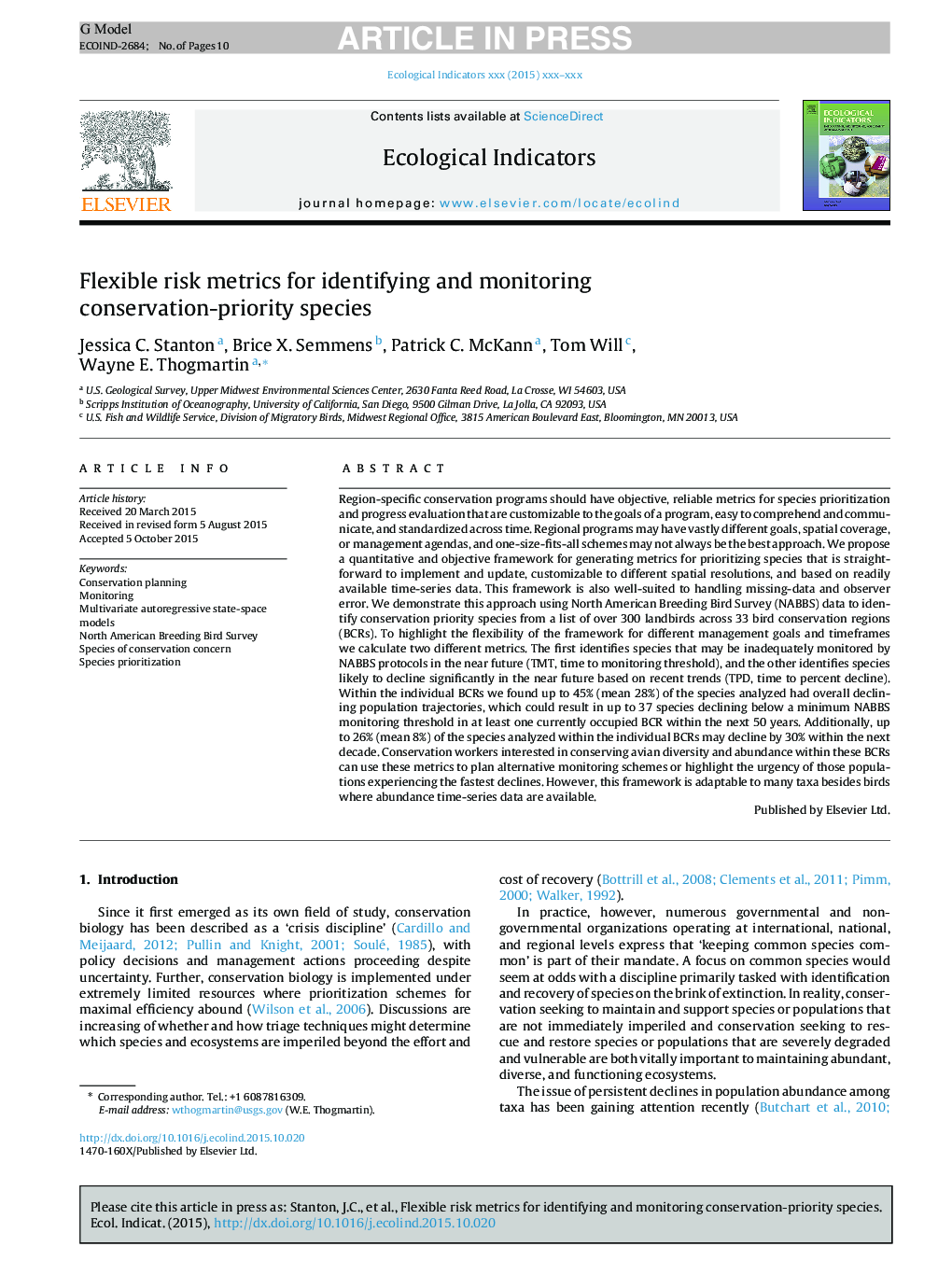| کد مقاله | کد نشریه | سال انتشار | مقاله انگلیسی | نسخه تمام متن |
|---|---|---|---|---|
| 6293692 | 1303105 | 2016 | 10 صفحه PDF | دانلود رایگان |
عنوان انگلیسی مقاله ISI
Flexible risk metrics for identifying and monitoring conservation-priority species
ترجمه فارسی عنوان
شاخص های ریسک انعطاف پذیر برای شناسایی و نظارت بر گونه های حیاتی حفاظت
دانلود مقاله + سفارش ترجمه
دانلود مقاله ISI انگلیسی
رایگان برای ایرانیان
موضوعات مرتبط
علوم زیستی و بیوفناوری
علوم کشاورزی و بیولوژیک
بوم شناسی، تکامل، رفتار و سامانه شناسی
چکیده انگلیسی
Region-specific conservation programs should have objective, reliable metrics for species prioritization and progress evaluation that are customizable to the goals of a program, easy to comprehend and communicate, and standardized across time. Regional programs may have vastly different goals, spatial coverage, or management agendas, and one-size-fits-all schemes may not always be the best approach. We propose a quantitative and objective framework for generating metrics for prioritizing species that is straightforward to implement and update, customizable to different spatial resolutions, and based on readily available time-series data. This framework is also well-suited to handling missing-data and observer error. We demonstrate this approach using North American Breeding Bird Survey (NABBS) data to identify conservation priority species from a list of over 300 landbirds across 33 bird conservation regions (BCRs). To highlight the flexibility of the framework for different management goals and timeframes we calculate two different metrics. The first identifies species that may be inadequately monitored by NABBS protocols in the near future (TMT, time to monitoring threshold), and the other identifies species likely to decline significantly in the near future based on recent trends (TPD, time to percent decline). Within the individual BCRs we found up to 45% (mean 28%) of the species analyzed had overall declining population trajectories, which could result in up to 37 species declining below a minimum NABBS monitoring threshold in at least one currently occupied BCR within the next 50 years. Additionally, up to 26% (mean 8%) of the species analyzed within the individual BCRs may decline by 30% within the next decade. Conservation workers interested in conserving avian diversity and abundance within these BCRs can use these metrics to plan alternative monitoring schemes or highlight the urgency of those populations experiencing the fastest declines. However, this framework is adaptable to many taxa besides birds where abundance time-series data are available.
ناشر
Database: Elsevier - ScienceDirect (ساینس دایرکت)
Journal: Ecological Indicators - Volume 61, Part 2, February 2016, Pages 683-692
Journal: Ecological Indicators - Volume 61, Part 2, February 2016, Pages 683-692
نویسندگان
Jessica C. Stanton, Brice X. Semmens, Patrick C. McKann, Tom Will, Wayne E. Thogmartin,
